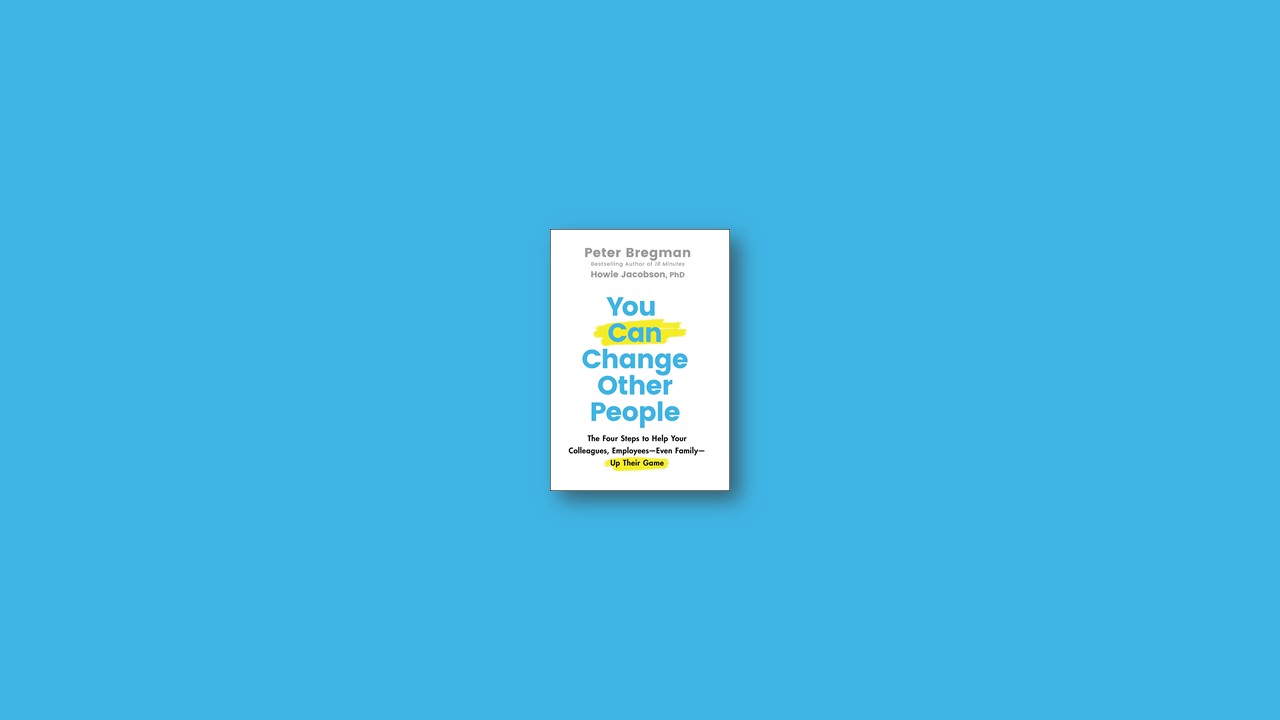CAN YOU REALLY CHANGE OTHER PEOPLE?
You can’t change other people; you can only change yourself. It’s a truism.
Only it’s not true.
Helping others change and improve when it’s hard and when they may not want to (at first) can look and feel like magic, but it’s not. It’s a skill—a set of repeatable steps—that by the time you finish this book, you’ll have that skill too, which is important, because we all need the skill. No matter your role at work and in life, your success is dependent, at least in part, on the success of those around you. In many situations, it would be great for you if people changed for the better.
PEOPLE DON’T RESIST CHANGE—THEY RESIST BEING CHANGED
When people struggle with a problem, they often feel shame at their own inadequacy. The very fact that they want or need your help means, to them, that they’ve already failed. They think some version of “I should be able to handle this on my own. What’s wrong with me?”
Now, imagine that you understand their problem and have a great idea that can help them. If you share your solution right away, and they haven’t thought of it themselves, that will often bring their shame to the surface. And shame is inhibitory; that is, when people feel shame, they stop taking action. Unlike guilt, which says, I did a bad thing, and can motivate people to change, shame says, I am a bad person, and typically represses initiative and halts momentum.
Here’s why: Shame is one of the feelings human beings will do almost anything not to feel. And the easiest way to get rid of shame—at least temporarily—is denial. If you deny the source of the shame, you deny that you have a problem (or deny that it’s your problem). Presto: no shame.
But, of course, denying the problem, or the severity of the problem, or the consequences of the problem, means denying the need to change, which we then call resistance to change.
Unfortunately, most of what we try to do to help people change reinforces their shame. When we barge in with the answer or think we can do it better, or when we think they should know better, we reinforce their shame. That’s why simply telling people what to do, or what we did in a similar situation, or what we would do if we were in that situation, so often backfires.
We give advice; they hear criticism. Fortunately, there are ways we can help.
We can develop a person’s ownership, independent capability, emotional courage, and future-proofing, so they change themselves. In the next four chapters, we’ll explore each of those powers, starting with ownership.
POWER 1: OWNERSHIP
When you solve problems for others, you take away their ownership of those solutions. Even if your advice is perfect—which, by the way, is almost never the case—it’s useless if it won’t be used.
If you really want to change someone, get them to create the plan. Get them to defend it. They’ll be much more likely to implement a suboptimal plan of their creation and choosing than the perfect plan that you create. And if their initial plan fails? You’ll be in a position to help them brainstorm a different approach because they’ll see you as an ally, rather than a critic.
Personal ownership is one important power of change.
POWER 2: INDEPENDENT CAPABILITY
Being helpful can be a wonderful trait in a manager or colleague—even a family member. And there are times when it’s appropriate (if I can’t figure out how to unmute myself in a Zoom meeting, and you tell me to click on the microphone icon in the lower left of my screen, that’s great).
But if someone comes to you with a recurring problem or one that requires their thinking and judgment, then giving them the answer or doing it for them will function as a crutch. You will have missed an opportunity to build their independent capability. And the next time they have a similar problem, they’ll just come to you again, because they haven’t learned how to solve it. They haven’t changed. You will be stuck doing their work and they will be stuck at a lower level of performance.
POWER 3: EMOTIONAL COURAGE
Think about it. If you have that conversation, you’ll likely feel something uncomfortable. Something you’re avoiding. Something you don’t want to feel.
Maybe your partner will respond badly, and you’ll get into an argument. Maybe they’ll feel hurt, and you’ll feel bad for having hurt them. Maybe they’ll get defensive and accuse you of a bunch of things, triggering your shame, and you’ll respond defensively. Maybe they’ll just get quiet and stone-faced and shut down communication entirely. Maybe you’ll lose your temper.
But if you don’t have the conversation, you won’t have to feel what you don’t want to feel. It’s a simple and reliable strategy: If you don’t want to feel uncomfortable, don’t do things that feel uncomfortable.
POWER 4: FUTURE-PROOFING
People change when they take ownership, develop independent capability, and exercise emotional courage in the face of fears and setbacks. Our success changing others requires developing these traits in the people we’re helping.
But we don’t just want people to change for this moment. We want them to transform their sticky problems and unfulfilled desires into an opportunity to get better, stronger, and more resilient in the future. To bounce back from that next challenge and grow to meet future opportunities. That’s future-proofing.
One of the downsides of giving advice or solving someone else’s problem is that they lose out on the future benefits of their current struggle.
Life doesn’t stand still. Getting better at solving today’s problems doesn’t prevent tomorrow’s. Just the opposite, in fact: developing yourself means setting yourself up for bigger, more challenging problems in the future.


